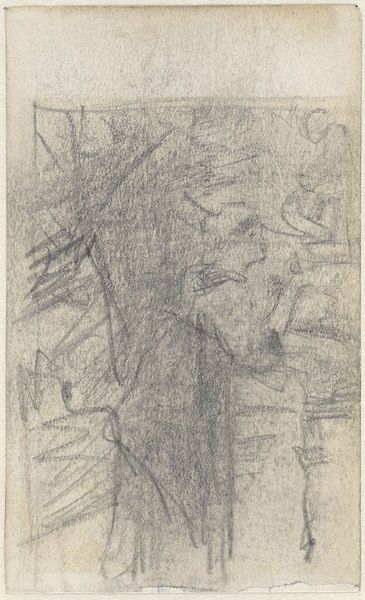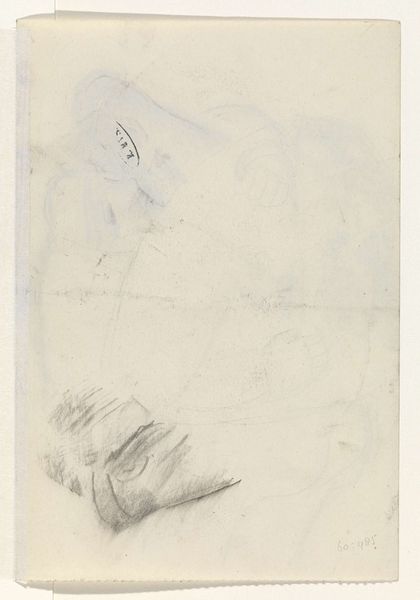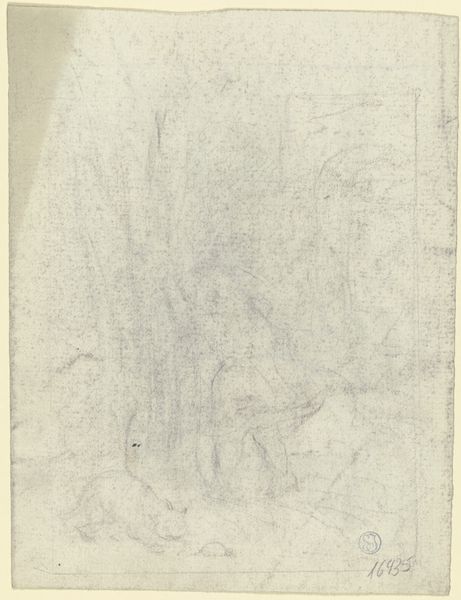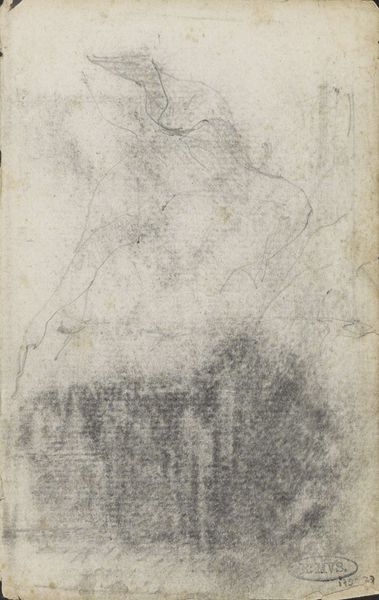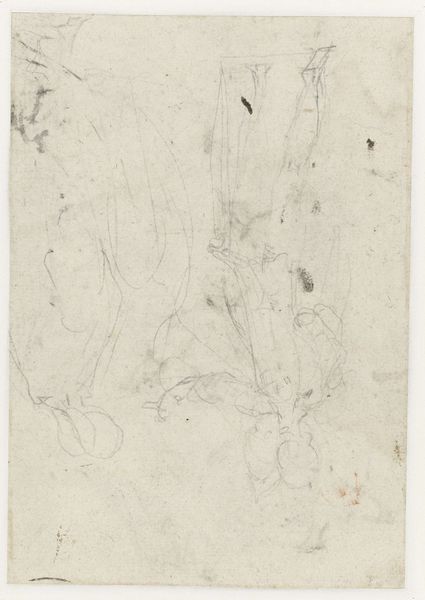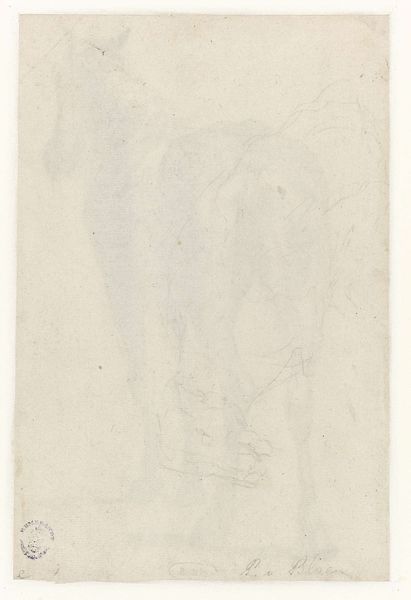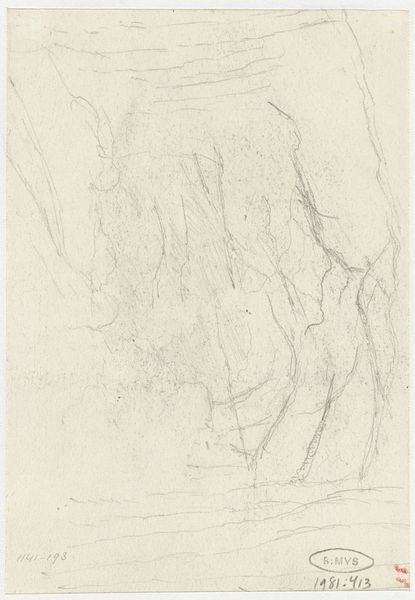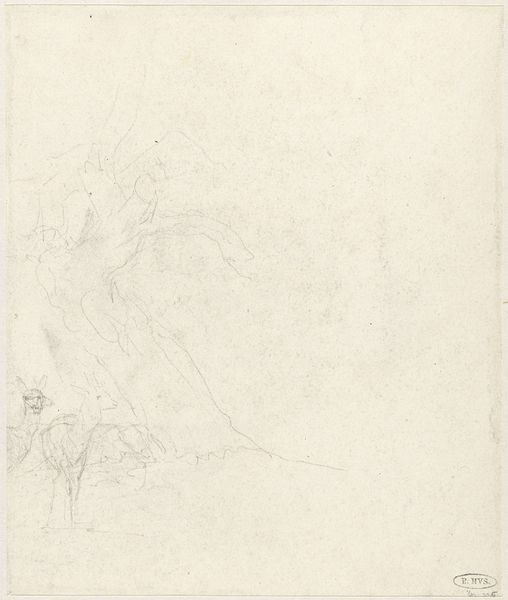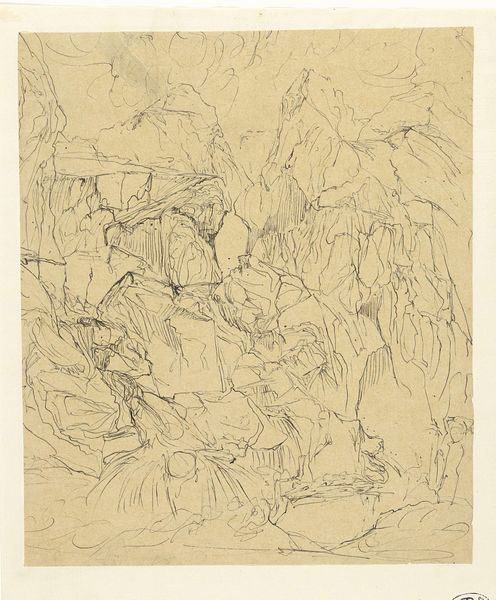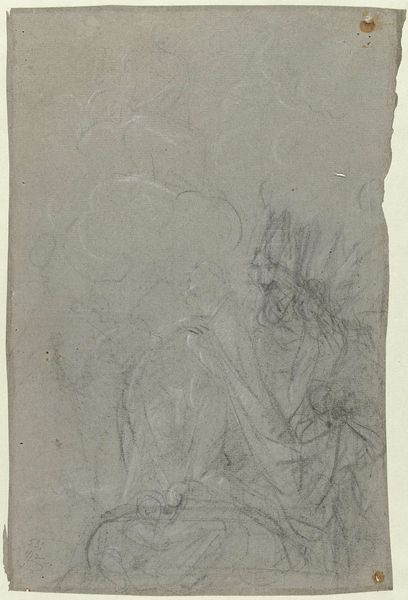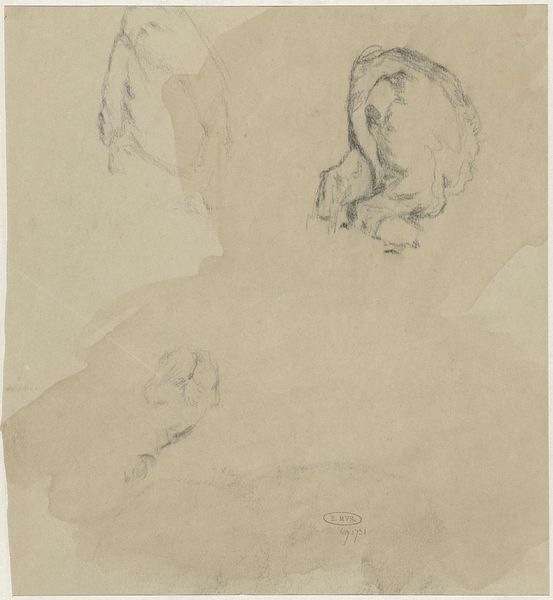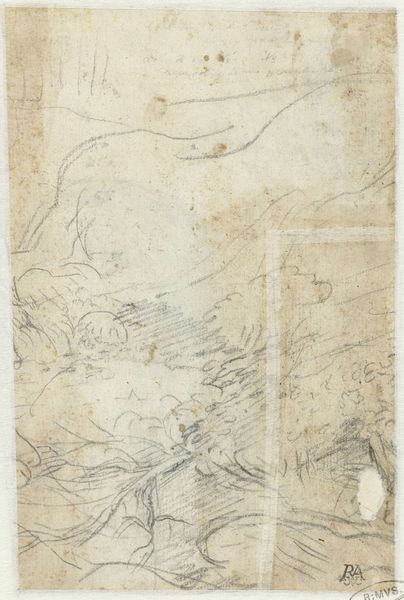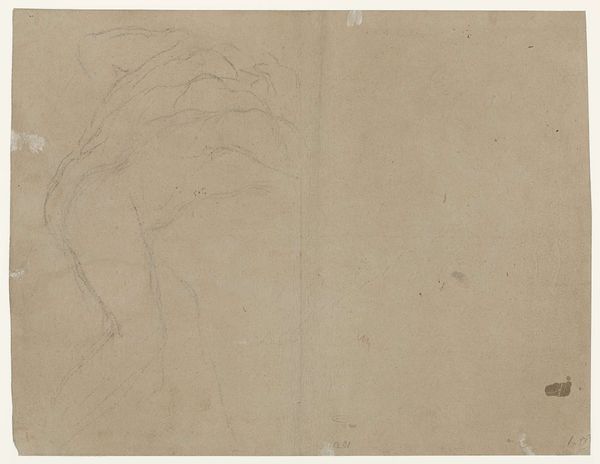
drawing, graphite
#
portrait
#
drawing
#
figuration
#
pencil drawing
#
graphite
Dimensions: height 149 mm, width 99 mm
Copyright: Rijks Museum: Open Domain
Editor: Here we have Karel Frederik Bombled’s "Standing Man," created sometime between 1832 and 1902, using graphite in a drawing. The sketchiness of the figure almost makes him disappear into the background. What can you tell me about this work? Curator: This seemingly simple drawing actually speaks volumes about representation and visibility, especially within the context of 19th-century Dutch society. Think about who was deemed worthy of portraiture during that time. Was it typically the working class, the marginalized? The ephemeral nature of the sketch, its incompleteness, raises questions about the subject's own precarious existence. Consider how the medium of graphite itself--easily erased and altered-- mirrors the ways in which societal narratives can be shaped, re-written, and even used to obscure certain truths. What does the 'unfinished' nature of this portrait tell you about the subjects it fails to depict in comparison? Editor: That's a really interesting way to think about it. I guess I hadn't considered who WASN'T being represented. So, the lack of detail is actually a statement in itself? Curator: Precisely. We should view this work in dialogue with power dynamics and prevailing cultural norms of its time, and how Bombled's piece invites us to critically examine these often-unspoken hierarchies. It prompts reflection on how we continue to grapple with visibility and erasure within contemporary frameworks. Editor: I never would have picked up on that by myself. It's amazing how much historical context can change how you view a piece. I'll definitely look at other portraits with this perspective. Thanks for helping me see this with new eyes. Curator: My pleasure! The act of questioning established narratives is central to the study of art. It's crucial that you continue to explore ways in which art shapes and challenges the world around us.
Comments
No comments
Be the first to comment and join the conversation on the ultimate creative platform.
